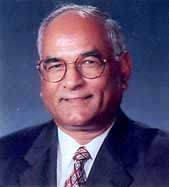Scientific Program
Keynote Session:
Title: Application electropoint diagnostics by R. Voll to detect the use of narcotic and other psychoactive substances in the sub-experts before testing on polygraph
Biography:
SUSHKO Vyacheslav V.
born in 13/02/1973
Summary: criminalistic, forensic expertise, experienced in psychiatry and education in psychiatry. Area of interest: criminalistic, forensic expertise, neuropsychiatry, psychopharmacology, forensic psychiatry, substance addiction, psychology of drivers, cellular neuroscience and juvenile psychiatry, psychooncology.
Accomplishments: author of 77 publications, among them:inventor's certificates and patents - 3; articles - 74
Abstract:
The use of alcohol, drugs, or other pharmacological drugs prior to polygraph testing is specifically practiced to distort test results.
Background
Urine or blood tests for chemical compounds may be used to detect dissimulation, but these methods are very expensive and time-consuming. An alternative is the R. Voll ElectroPoint Screening Test method. We used the R. Voll electropoint diagnostic method for screening testing and identifying drug users.
Results
In the study, we used the «Elena» device. The method is based on R. Voll electropuncture diagnostics, which is allowed for use.
Created electronic homeopathic analogues of narcotic substances (markers) in various dilutions (potencies), which not only solved the problem of diagnosis, but also to determine the approximate time of use of these substances.
We expand the scale of the measuring scale to 80 conventional units, regardless of the initial measured level of the current point found for electropoint diagnostics on R. Voll.
After that, a test drug is injected into the measuring circuit, which marks the presence or absence of the investigated fact of drug use, and repeated measurement by pumping. If the value obtained on the scale of the device is less than 80 conventional units, then the test is considered positive ("yes", it was the use of narcotic substance), if it returns to the initial level - negative ("no", there was no fact of use of narcotic substance). The list of drugs in the electronic selector consisted of narcotic and toxic substances.
Conclusion
Thus, using the highly sensitive R. Voll method of electropoint diagnostics, it is possible to detect not only the fact of drug use (most accurately during the last year), but also the presence of drug use in the distant past, with an approximate duration of the last use, single or multiple use
Title: Lip Print Impression: Versatile Evidence for Personal Identification & Sex Determination In Forensic Science
Biography:
Mohammad Athar,Assistant Professor ,Department of Forensic Science ,Institute for Excellence in Higher Education, Bhopal, M.P. INDIA
Abstract:
Cheiloscopy is a study of lip prints which helps in the identification of humans based on lip traces or impression. It is based on the fact that the pattern of lines on the red part of human lips is unique to each human being. The aim of the present study is to ascertain whether lip prints impression have the potential for assessment of sex of an individual from the configuration and to identify the most common pattern. Lip prints were collected and matched according to Suzuki and Tsushihashi’s classification. The most common pattern found in female was Types I and I’, while Type IV and Type V was predominant among males. Studies show that lip prints have a great potential to establish individuality, show gender variation, and remain unchanged forever. In the end, we can suggest that identifying lip print pattern could be an important tool for sex assessment and lip prints are unique to an individual.
Oral Session 1:
- Forensic DNA Analysis | Forensic Pathology and Diagnosis | Forensic Chemistry and Toxicology Criminology | Forensic Medicine | Forensic Odontology | Blood Spatter Analysis | Ballistic Analysis | Forensic Entomology Fingerprint | Forensic Dactyloscopy | Cyber Security
Title: Smoking Marijuana. Is it Safe for the Heart?
Biography:
Dr. Karl A Larsen is Director of Graduate Studies for Forensic Sciences visiting Clinical Professor in Forensic Science at University of Illinois at Chicago,USA. Dr. Karl A Larsen completed his Ph.D. in Pharmacodynamics from University of Illinois at Chicago.Dr. Karl A Larsen's research interests include Controlled Substances, Cannabis, Alcohol in Liquor, Intoxicating Compounds, Toxicology, approximately 200 times
Abstract:
Different preparations of Cannabis sativa (commonly marijuana and hashish) are widely used mainly for their euphoric effects. Cannabis after alcohol consumption is by far the most commonly used recreational drug in Europe. About 20% of adults in the European Union (aged 15–64 years), over 62 million people, have tried cannabis at least once in their life [1]. Users and lay people believe that marijuana or hashish is safe. Many cases of cardiovascular events have, however, been related to a cannabis consumption [2-4], and cases of acute ischemia or thrombosis even on the ground of normal coronary arteries have been reported.
Title: Efficacy of Canine Influenza Virus (H3N8) Vaccine to Reduce Pulmonary Lesions after Co-challenge with Canine Influenza Virus and Streptococcus equi subsp. zooepidemicus
Biography:
Dr. Yinduo Ji is a Professor at University of Minnesota. Dr. Yinduo Ji completed his Ph.D. in Medical Microbiology and Immunology in 1993 from China Academy of Preventive Medicine (current Chinese Center for Disease Control and Prevention), Beijing, China. Dr. Yinduo Ji has bagged many honors and awards. He has published many articles in peer-reviewed journals. Dr. Yinduo Ji is associated with various professional and scientific Societies like American Society for Microbiology and American Association for the Advancement of Science.
Abstract:
To examine the effectiveness of canine influenza vaccination to reduce pulmonary lesions in dogs co-challenged with CIV and S. equi subsp. zooepidemicus.In this study, four groups of 7- to 10-week-old, CIV-naive beagles (32 dogs total) were used. One group was vaccinated with CIV vaccine (group 4) and the remaining 3 groups (groups 1, 2 and 3) were not vaccinated. Group 1 was challenged with CIV, group 2 was challenged with S. equi subsp. zooepidemicus and groups 3 and 4 were co-challenged with CIV and S. equi subsp. zooepidemicus.
Title: New Perspectives on the Unique Micro and Nano-Structural Features of the Cu/ZnO Methanol Synthesis Catalyst
Biography:
Dr. Dennis W. Smith, Jr. received his B.S. (1988) from Missouri State University and his Ph.D. (1992) from the University of Florida under the guidance of Prof. Ken Wagener on the scope and mechanism of acyclic diene metathesis (ADMET) polymerization. He was a Rhone Poulenc Graduate Research Fellow in Lyon, France pursuing novel silicone elastomers, and a Dow Chemical Postdoctoral Fellow (1993) with Dr. Raymond König in Rheinmünster, Germany exploring fundamental aspects of epoxy networks. Dr. Smith joined The Dow Chemical Company Central Research Laboratory as Sr. Research Chemist (1993) and later was promoted to Project Leader (1996) working primarily on the synthesis and characterization of high-performance thermosets for thin film microelectronics applications.
Abstract:
The vapor phase methanol process, introduced by ICI technology in 1966, and the liquid phase methanol synthesis process (LPMeOHtm) introduced first by ChemSystems, Inc. (now Nexant) in 1975, are seen as the 2 big research/technology advances in the conventional methanol synthesis technology. The success of these 2 processes, both from a scientific and commercial standpoint, primarily is driven by the very superior, almost anomalous, performance of the proprietary Cu/ZnO/Al2O3ICI technical catalyst, and it’s very unique microstructural features, often termed as a “microcrystalline sponge”. The LPMeOHtm process overcomes some of the glaring drawbacks associated with the vapor phase process, viz., highly exothermal nature of methanol synthesis reactions, presence of local reactor hot spots which presents possibility of thermal runaways, and low per-pass CO/H2 conversions.
Title: Attention Deficit and Hyperactivity Disorder May be Linked to Renalase Enzyme Amount Synthesized in Brain?
Biography:
Sen Pathak, Ph.D., F.N.A.Sc., Geneticist and Professor of Cell Biology and Laboratory Medicine at The University of Texas M.D. Anderson Cancer Center in Houston; Professor, Genetics Program at The Graduate School of Biomedical Sciences, The Health Science Center and at The School of Health Professions, Houston; Professor of Medicine at Baylor College of Medicine; Senior Scientist (adjunct) in the Department of Genetics at Southwest Foundation for Biomedical Research, San Antonio, Texas, USA; Visiting Professor of Genetics at The University of Sao Paolo, Faculty of Medicine at Ribeirao Preto, Barazil; and currently a Lifetime Emeritus Professor of Cancer Biology and a Distinguished Research Professor of Genetics at The University of Texas M.D. Anderson Cancer Center at Houston, Texas. He is Internationally recognized scientist for his pioneering research work first on Mammalian Population Cytogenetics and lately on human and other mammalian Cancer Genetics.
Abstract:
Attention deficit and hyperactivity disorder in children (excessive mobility, attention and concentration deficit, impulsivity) are important health problems that may affect life quality lifelong. Attention deficit generally take place with dyslexia, dyscalculia and dysgraphia which are known generally as specific learning difficulty (SLD) Principal biochemical mechanism underlying attention deficit and hyperactivity disorder might be related with inadequate synthesizing of dopamine and noradrenalin in brain or rapidly catabolism of these molecules. Dopamine, noradrenalin (norepinephrine) and epinephrine (adrenalin) molecules are named generally as catecholamines. Catecholomines are synthesized at suprarenal glands and from tyrosine amino acid at nerve system First and principal control enzyme named as tyrosine hydroxylase catalyses the hydroxylation of tyrosine to DOPA (dihydroxyphenyl alanine). Composed DOPA is decarboxylased by DOPA-decarboxylase enzyme which is a cytoplasmic enzyme to dopamine (dihydroxy phenyletylamine). Dopamine is converted to epinephrine through dopamine beta hydroxylase. Epinephrine composed this way is converted to norepinephrine through COMT (cathecol-o-methyltransferase) [1]. There is no recalling mechanism of cathecolamines released at adrenal medulla. Cathecolamine synthesing cells at adrenal medulla are named as “chromaffin cells” because these cells are stained to reddish-brown color with potassium dichromate. Chromaffin cells are also found in heart, liver, kidneys, gonads and adrenergic neurons of postganglionic sympathetic system and in central nerve system.
Title: Adenoid Cystic Carcinoma of the Lacrimal Gland
Biography:
Dr. Craig E. Geist, MD, MS, FACS, FAAO, ASOPRS is board-certified in Ophthalmology. He is an oculoplastic surgeon, orbital specialist, chair of the Department of Ophthalmology, and a professor of ophthalmology at The George Washington University School of Medicine & Health Sciences. His area of specialization focuses on eyelid and orbital tumors, eyelid and eyebrow droop, aging eyelids and wrinkles, Botox injections and dermal filler of the eyes and face, thyroid eye disease and tearing due to blocked tear ducts. Dr. Geist completed his medical training at the Virginia Commonwealth University. Following medical school, he completed his residency in ophthalmology at George Washington University and a fellowship in Oculoplastics and Orbit at Massachusetts Eye and Ear Infirmary at Harvard University Medical Center. He is a Fellow of the American Academy of Ophthalmology and a Fellow of the American Society of Ophthalmic Plastic and Reconstructive Surgery. He is listed as “Top Doctor” in Washingtonian Magazine, “Best Doctors” in Washington Consumer’s Checkbook Magazine, “America’s Top Ophthalmologists”, US News and World Report and in the Super Doctors List, the Washington Post.
Abstract:
The clinicopathologic features of an isolated, primary adenoid cystic carcinoma of the lacrimal gland in a 65-year-old woman are discussed. The patient presented with a painless, slowly growing, anterior orbital mass, which appeared well circumscribed without bony involvement on imaging. Excisional biopsy was performed and histopathological examination revealed the mass to be adenoid cystic carcinoma of the lacrimal gland. The histology of other epithelial lacrimal gland tumors is discussed with a review of the literature. This case highlights the importance of having a wide differential diagnosis when treating orbital neoplasms.
Title: Peri-ovulatory Phytoestrogen Improves Pregnancy Rate in Women with Polycystic OvarianSyndrome Receiving Ovulation Induction with Clomiphene Citrate
Biography:
David G. Mutch, MD is the chief of the Division on Gynecologic Oncology at Washington University School of Medicine, USA. Dr. David Mutch treats patients with all types of gynecologic cancer, including ovarian and cervical cancer. Dr. David Mutch completed his medical degree from Washington University school of Medicine, USA and holds fellowship in Gynecologic Oncology from Duke University Medical Centre, North Carolina.
Abstract:
Abstract Background: PCOS is the most common ovarian factor of female infertility, in low resource countries clomiphene citrate is the most popular drug used for induction of ovulation as its price is affordable for most of patients with least side effects. Objective: Evaluate the effect of phytoestrogen in women receiving induction with clomiphene citrate when given peri ovulatory to oppose antiestrogenic effect of clomiphene citrate. Methodology: Prospective study conducted on 500 patients with PCOD who attended infertility clinic, patients were randomized into 2 groups both groups received traditional CC induction , group (1) 225 patients received phyto-estrogen, starting in the 7th day of the cycle till the day of HCG injection ,group(2) 225 patients received clomiphene citrate only. Endometrial thickness and follicular growth were assessed by transvaginal US. When follicles reached 18 mm, 10,000 IU HCG was administered together with timed intercourse. Both groups were compared as regard cumulative pregnancy rate, ovulation, endometrial thickness and change in hormonal milieu. Results: Midluteal serum progesterone was significantly higher in the study group as compared with the control group (15.93 ±1.8 versus 12.93 ± 1.8); endometrial thickness was also greater in the study group as compared with the control group, (10.3 ± 1.1 versus 8.2 ± 0.9). Ovulation in the three cycles was in favor of study group 82.5% versus 80.4% but not statistically significant. The CPR was significantly higher in the study group than in the control group (34.2% vs. 20.8%. P = 0.1). There were 6 cases of multiple pregnancy in the study group and 4 cases in the control group. Conclusion: Adding phytoestrogen to CC induction improve ovulation and pregnancy rate, it is a good option for patients with PCOS seeking for pregnancy treatment with affordable price and minimal side effects.
Title: Determination of the detection time limit of blood meal host DNA in a tick, Rhipicephalus (Boophilus), post feeding.
Biography:
Tanatswa Gara is a recent graduate from University of Zimbabwe were she studied BSc Honours in Forensic Science and was awarded a first class degree. She is currently working in a research laboartory at Africa University which is carrying out some highly specialized work on malaria and mosquitoes. This includes capturing mosquitoes from malaria endemic areas, identifying them morphologically and also carrying out various molecular analyses on the mosquitoes. She has also undergone several training workshops for molecular work from CDC experts.
Abstract:
The tick genus, Rhipicephalus (Boophilus), is a common hematophagous parasite found feeding on animals. This study examined the extent to which host DNA in a blood meal in Rhipicephalus, can be identified post feeding using a cytochrome b polymerase chain reaction (PCR) assay. Female adult ticks (0.2 and 0.25 grams) were collected from cows and divided into 2 groups, one group was kept alive so as to analyse DNA degradation due to digestion and the other group was euthanized to analyse degradation due to decomposition. Morphological changes of the ticks were tracked and the presence/absence of cow DNA was analysed over time. Live ticks were analysed daily until they died and the dead ticks were analysed up to 290 days post feeding (PF). The ticks’ gut contents were placed on Whatman® filter paper and dried before Chelex® DNA extraction. A 561 base pair region on the cytochrome b gene of the cow mitochondrial DNA was amplified and PCR products were visualized using agarose gel electrophoresis. Cow DNA was detected in the live ticks up to day 23 PF, however, probability of successful detection went down to at least 33% after day 15 PF. The live ticks started dying from day 40 PF and the last one died 52 days PF. Cow DNA was detected with bright bands in the dead ticks from day 1 PF to day 290 PF which is when the last sample was run, so the detection limit of DNA in dead ticks could not be determined. The persistence of host DNA in ticks showed the utility of ticks in forensic investigations. The methods used in this study can be used in forensic acarology to identify the host species of an arthropod when it is found at a crime scene.
Title: A Toxicological Analysis of Residue of Pesticide Sprayed on Lady's Finger before & after washing with Vishaghna Dravyas (Antitoxic Fluids).
Biography:
Mohammad Athar (Assistant Professor)
Department of Forensic Science, Institute for Excellence in Higher Education, Bhopal(M.P)India
Abstract:
In the present research effort is made to make a “difference”. Analysis is done by sophisticated chromatography techniques to find out whether, “Rock Salt solution” very common ingredient for Indian recipes or “vinegar water” as both substances are known for their antitoxin properties and therefore reduces pesticide residue to its maximum from ladies finger, after soaking it for 2-4 hrs rendering it safe for consumption. Qualitative analysis of malathion was done by HPLC method the retention time of malathion was found to be 2.825±0.3, and in given sample the retention time in water (2.072) and NS (2.559) was found similar to malathion (2.825) retention time, which confirm the presence of malathion in given water and NS sample.









